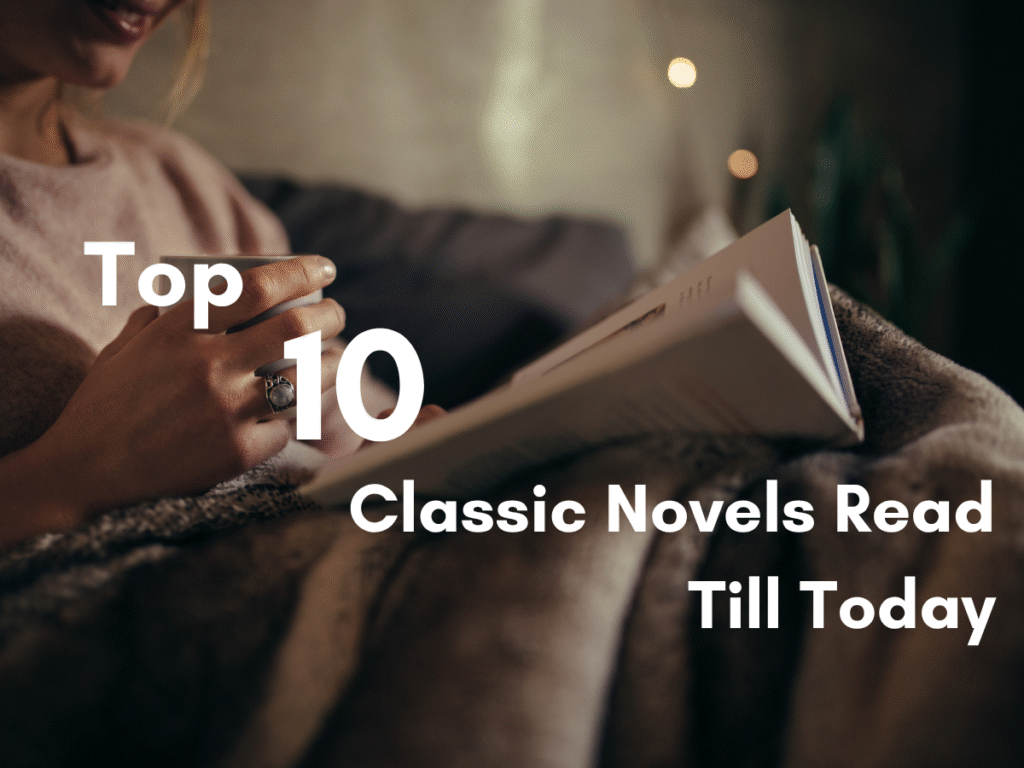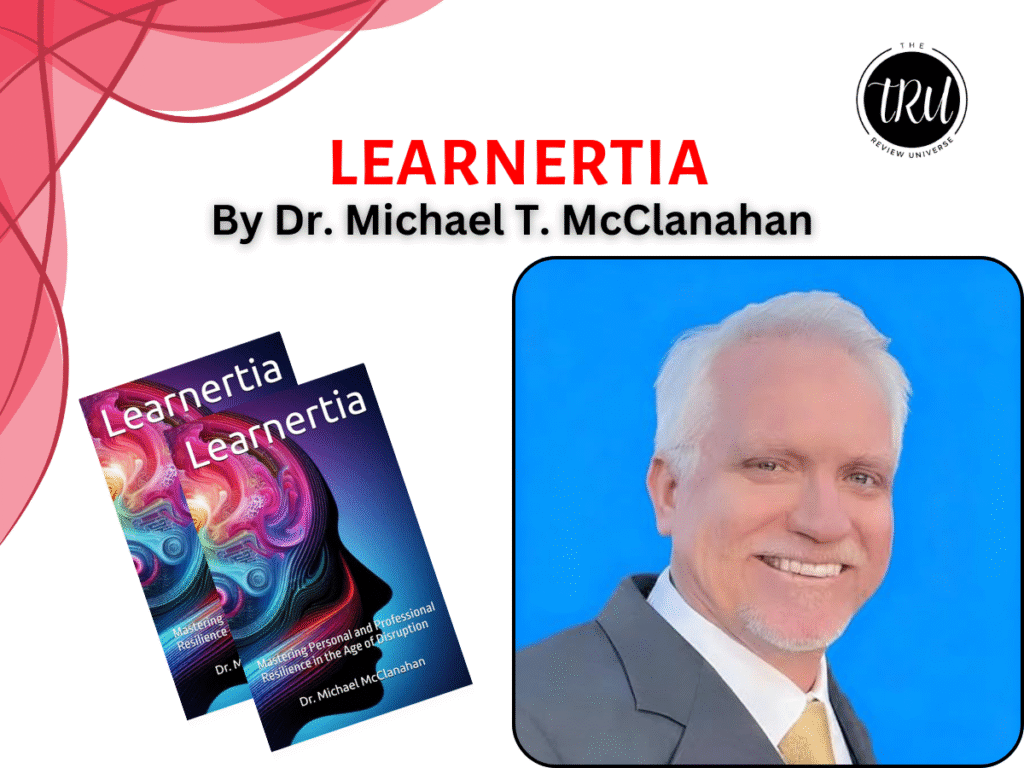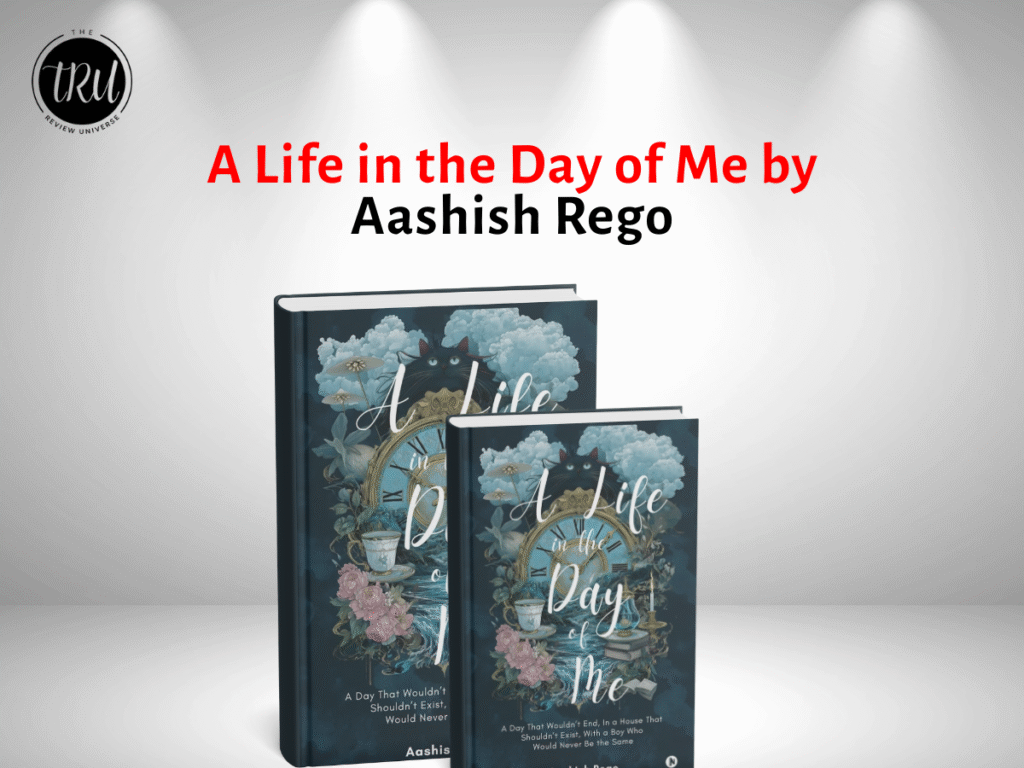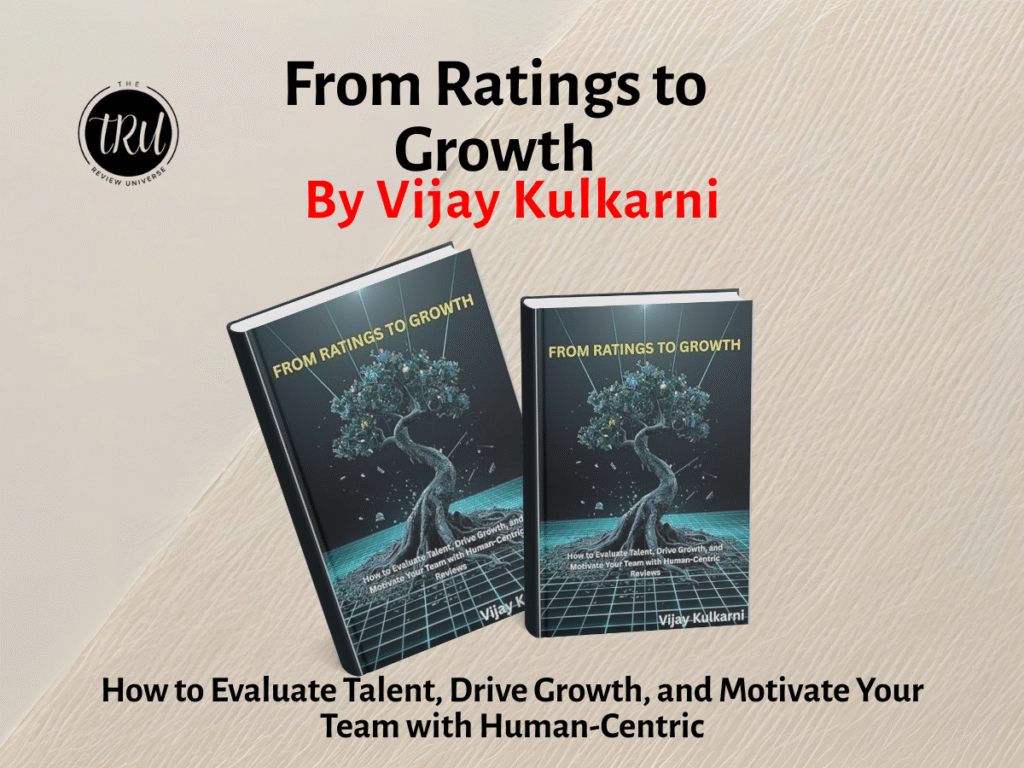
Top 10 Classic Novels have captivated readers for generations and continue to be must-reads even today. These timeless literary masterpieces offer powerful stories, unforgettable characters, and insights that still resonate. If you’re looking for books that truly stand the test of time, this list is the perfect place to start.
Book reading is a timeless activity that offers a gateway to knowledge, imagination, and personal growth. It allows individuals to engage with diverse worlds, characters, and ideas that transcend the boundaries of their own experiences. Whether delving into fiction to explore new realms or immersing in non-fiction to expand one’s understanding of history, science, or philosophy, reading fosters critical thinking and emotional intelligence. It sharpens the mind, enhances vocabulary, and cultivates empathy by offering perspectives beyond one’s own.
Classic novels have stood the test of time, continuing to captivate readers across generations with their rich storytelling, profound themes, and unparalleled literary craftsmanship. These timeless works, from the sweeping narratives of Moby-Dick and Pride and Prejudice to the poignant introspection of Crime and Punishment and The Great Gatsby, offer more than just entertainment; they present deep explorations of the human condition, social structures, morality, and existential dilemmas.
Despite the evolving nature of language, culture, and technology, classic novels remain relevant by addressing universal themes—love, ambition, identity, and societal conflict—that resonate with readers of all eras. Authors like Leo Tolstoy, Charles Dickens, Jane Austen, and F. Scott Fitzgerald are celebrated not only for their intricate plots and memorable characters but also for their ability to provoke reflection on the complexities of life.
Even in an age where digital content dominates, these novels continue to inspire new interpretations, adaptations, and discussions, proving that great literature never truly fades.
Classic novels span a wide range of genres, themes, and plot structures, but they often share certain distinct characteristics that set them apart as enduring works of literature.
Genres Behind the Top 10 Classic Novels
- Romance – Focus on love, courtship, and marriage, often set against social expectations.
- Historical Fiction – Set in real historical contexts, blending fictional characters with historical events.
- Gothic Fiction – Characterized by dark, mysterious settings, and themes of horror, death, and the supernatural.
- Social Realism – Focuses on societal issues like poverty, class inequality, and injustice.
- Psychological Fiction – Explores the inner workings of the mind, guilt, and moral dilemmas.
- Adventure and Exploration – Emphasizes journeys, personal quests, and the conflict between man and nature.
Common Themes in Top 10 Classic Novels
- Class and Social Hierarchy
- Morality and Ethics
- Identity and Self-Discovery
- Love and Human Relationships
- Conflict Between Individual and Society
- Alienation and Isolation
General Characteristics of Top 10 Classic Novels
- Timelessness – Themes and conflicts remain relevant across generations.
- Complex Characters – Deep psychological depth and moral ambiguity.
- Rich Language and Style – Elevated, often poetic or highly descriptive prose.
- Moral and Philosophical Depth – Encourages reflection on life, society, and human nature.
- Cultural and Historical Insight – Offers a window into the values, struggles, and norms of the time in which it was written.
Classic novels are multifaceted works that combine literary artistry with deep social, psychological, and philosophical insight. Their ability to provoke thought and evoke emotion makes them enduring pillars of literature.
Here, we are going to look at the Top 10 Classic Novel Reads Till Today!
1. Pride and Prejudice by Jane Austen

Pride and Prejudice, written by Jane Austen and first published in 1813, is one of the Top 10 Classic Novels, most beloved and enduring novels in English literature. Set in early 19th-century rural England, the story follows the spirited and intelligent Elizabeth Bennet, the second of five daughters in a respectable but not wealthy family. The novel centers around Elizabeth’s evolving relationship with the proud and enigmatic Fitzwilliam Darcy, a wealthy gentleman who at first appears aloof and condescending.
The plot unfolds against the backdrop of social expectations, marriage pressures, and class distinctions. When Darcy first proposes to Elizabeth, she rejects him due to his arrogance and her belief that he has wronged others, including her charming acquaintance George Wickham. However, as truths are gradually revealed and misunderstandings cleared, Elizabeth comes to see Darcy’s true character—a man of integrity and kindness beneath his reserved exterior. Simultaneously, Darcy grows to admire Elizabeth’s wit, independence, and moral strength.
2. Wuthering Heights by Emily Brontë

Wuthering Heights, written by Emily Brontë and published in 1847, is a dark, intense, and emotionally charged one from the Top 10 Classic Novels that explores themes of passion, revenge, social class, and the destructive nature of obsessive love. Set on the bleak Yorkshire moors, the story unfolds through a layered narrative, primarily told by the housekeeper Nelly Dean to a visitor named Mr. Lockwood.
The plot centers on the turbulent relationship between Heathcliff, an orphan adopted into the Earnshaw family, and Catherine Earnshaw, his fiercely spirited and willful soulmate. Though deeply bonded, Catherine chooses to marry the more socially acceptable Edgar Linton, rejecting Heathcliff due to his low status. This betrayal sets Heathcliff on a path of vengeance, as he seeks to punish all those he holds responsible, including Catherine’s descendants.
The novel spans two generations, showing how the consequences of their doomed love and Heathcliff’s bitterness affect the lives of everyone at Wuthering Heights and Thrushcross Grange. With its gothic atmosphere, complex characters, and psychological depth, Wuthering Heights defies typical romantic conventions, offering a haunting exploration of love’s power to destroy as well as endure.
3. Moby-Dick by Herman Melville

Moby-Dick, one of the Top 10 Classic Novels, written by Herman Melville and published in 1851, is a profound and sprawling novel that blends adventure, philosophy, and symbolism to explore themes such as obsession, fate, nature, and the limits of human knowledge. The story is narrated by Ishmael, a sailor who joins the whaling ship Pequod, captained by the mysterious and driven Captain Ahab. What begins as a whaling voyage soon turns into a relentless and dangerous quest for vengeance, as Ahab reveals his obsession with hunting Moby Dick, a massive and elusive white sperm whale that had previously destroyed his ship and severed his leg.
As the Pequod sails across the world’s oceans, the novel delves into detailed descriptions of whaling, the sea, and philosophical reflections on life, religion, and the natural world. Ahab’s monomaniacal pursuit of the whale becomes a symbol of man’s struggle against the unknown and the uncontrollable forces of the universe.
The crew, each with their own backgrounds and beliefs, become caught in Ahab’s destructive obsession. In the end, Ahab’s quest leads to tragedy, with the ship destroyed and only Ishmael surviving to tell the tale. Moby-Dick is a richly layered masterpiece that challenges readers with its complex structure and deep thematic content, making it one of the greatest works in American literature.
4. Crime and Punishment by Fyodor Dostoevsky

Crime and Punishment, one of the Top 10 Classic Novels, written by Fyodor Dostoevsky and published in 1866, is a psychological and philosophical novel that explores the complexities of morality, guilt, redemption, and the human conscience. Set in the gritty, impoverished streets of St. Petersburg, Russia, the story follows Rodion Raskolnikov, a former student living in poverty who develops a theory that certain extraordinary individuals have the moral right to commit crimes for a greater good. Believing himself to be one of these “extraordinary” people, Raskolnikov murders a greedy old pawnbroker, whom he considers a parasite on society.
However, the act does not bring him peace or justification—instead, it triggers intense inner turmoil, paranoia, and psychological deterioration. As he wrestles with guilt and rationalization, Raskolnikov becomes entangled with other characters who challenge his worldview, including Sonia, a humble and devout young woman who becomes his moral and emotional anchor.
The novel traces his gradual journey toward confession, spiritual awakening, and redemption. Through Raskolnikov’s psychological torment and eventual transformation, Crime and Punishment deeply examines the consequences of alienation, the limits of reason, and the redemptive power of suffering. It remains one of the most powerful portrayals of crime and conscience in world literature.
5. Frankenstein by Mary Shelley

Frankenstein; or, The Modern Prometheus, one of the Top 10 Classic Novels, written by Mary Shelley and first published in 1818, is a groundbreaking Gothic novel that blends elements of horror, science fiction, and romanticism to explore themes of ambition, creation, isolation, and the consequences of playing God. The story is framed as a series of letters from Robert Walton, an Arctic explorer, who recounts the tragic tale told to him by Victor Frankenstein, a brilliant young scientist. Driven by a thirst for knowledge and the desire to conquer death, Victor creates a living being from assembled body parts and animates it through an unorthodox scientific experiment.
However, horrified by his creation’s monstrous appearance, he abandons it, setting off a chain of tragic events. The creature—intelligent, sensitive, and initially benevolent—is rejected by society and its creator, leading it to become bitter and vengeful. As the creature demands recognition and revenge, Victor is drawn into a devastating spiral of guilt, loss, and obsession. Frankenstein questions the ethical limits of scientific discovery and the responsibilities of creators toward their creations. Mary Shelley’s novel remains a timeless meditation on the dangers of unchecked ambition, the longing for acceptance, and the moral dilemmas at the heart of human progress.
The novel raises deep questions about humanity, responsibility, and the dangers of unchecked scientific ambition.
6. War and Peace by Leo Tolstoy

War and Peace is ranked 6th in the Top 10 Classic Novels. It is a sweeping epic set during the Napoleonic Wars, focusing on Russian society and the lives of several aristocratic families, especially the Rostovs, the Bolkonskys, and the Bezukhovs. The novel weaves together the personal dramas, romances, and growth of characters like Pierre Bezukhov, an awkward but kind-hearted heir searching for meaning; Prince Andrei Bolkonsky, a proud and disillusioned officer; and Natasha Rostova, a lively and passionate young woman. Amid the backdrop of historic battles such as Austerlitz and Borodino, the story explores how war impacts individuals and society. Tolstoy delves deeply into themes of fate, free will, love, and the nature of history.
Throughout the novel, characters confront their beliefs, ambitions, and relationships, ultimately seeking peace and purpose in a turbulent world.
7. David Copperfield by Charles Dickens

David Copperfield, written by Charles Dickens and first published in 1850, is a classic coming-of-age novel that traces the life and growth of its titular character from a troubled childhood to mature adulthood. Narrated in the first person by David himself, the novel offers an intimate and detailed portrayal of Victorian society through David’s experiences with family, friendship, love, and hardship.
Orphaned at a young age and subjected to cruelty from his stepfather, David’s journey is marked by both adversity and opportunity as he encounters a wide array of memorable characters, such as the kind-hearted Mr. Micawber, the loyal Peggotty family, and the cunning Uriah Heep. The novel explores themes of social class, perseverance, and self-discovery, highlighting Dickens’s critique of the social injustices and inequalities of his time.
Through its richly drawn characters and vivid storytelling, David Copperfield remains a timeless exploration of resilience, personal growth, and the search for identity amidst life’s challenges. This being one of the Top 10 Classic Novels, explores themes of perseverance, personal growth, and the importance of kindness and integrity in the face of adversity.
8. To Kill A Mocking Bird by Harper Lee

To Kill a Mockingbird, another one of the Top 10 Classic Novels, written by Harper Lee and published in 1960, is a powerful and enduring novel that explores themes of racial injustice, moral growth, and compassion in the American South during the 1930s. The story is narrated by Scout Finch, a young girl growing up in the fictional town of Maycomb, Alabama, and follows her experiences alongside her older brother, Jem, and their father, Atticus Finch, a principled lawyer.
When Atticus defends Tom Robinson, a Black man falsely accused of raping a white woman, Scout and Jem confront the harsh realities of prejudice, inequality, and hatred in their community. Through the innocent eyes of Scout, the novel examines the loss of innocence and the importance of empathy, as Atticus teaches his children to understand and respect others despite societal biases. To Kill a Mockingbird combines a gripping courtroom drama with poignant reflections on human nature, making it a seminal work in American literature and a lasting call for justice and humanity.
To Kill a Mockingbird is set in the small town of Maycomb, Alabama, during the 1930s. The story is narrated by Scout Finch, a young girl whose father, Atticus Finch, is a respected lawyer. The main plot centers on Atticus defending Tom Robinson, a Black man falsely accused of raping a white woman, Mayella Ewell. Despite clear evidence of Tom’s innocence, racial prejudice leads to his conviction. Alongside this serious storyline, Scout and her brother Jem grow up facing the realities of racism and injustice, as well as childhood adventures, including their fascination with their mysterious neighbor Boo Radley.
The novel explores themes of morality, empathy, and the loss of innocence, emphasizing the importance of standing up for what is right.
9. 1984 by George Orwell

The 9th one from the Top 10 Classic Novels, 1984, written by George Orwell and published in 1949, is a dystopian novel that presents a chilling vision of a totalitarian future where government surveillance, propaganda, and oppression dominate every aspect of life. The story is set in Airstrip One (formerly Britain), a province of the superstate Oceania, ruled by the Party and its enigmatic leader, Big Brother.
The protagonist, Winston Smith, works at the Ministry of Truth, where he alters historical records to fit the Party’s ever-changing narrative. Secretly rebellious and yearning for truth and freedom, Winston begins a forbidden love affair and secretly questions the Party’s control. However, the omnipresent surveillance, manipulation of reality through “doublethink,” and brutal repression soon close in on him. 1984 explores themes of totalitarianism, censorship, identity, and the power of language to shape thought. Orwell’s novel serves as a profound warning about the dangers of unchecked political authority and the loss of individual freedom, making it a timeless and influential work in political and literary history.
10. The Catcher in the Rye by J D Salinger

The Catcher in the Rye, from the Top 10 Classic Novels, written by J.D. Salinger and published in 1951, is a seminal coming-of-age novel that delves into themes of alienation, identity, and the painful transition from adolescence to adulthood. The story is narrated by Holden Caulfield, a disenchanted and rebellious teenager who has just been expelled from his prep school.
Over the course of a few days in New York City, Holden grapples with feelings of loneliness, confusion, and cynicism as he struggles to find meaning in a world he views as “phony.” Throughout his wanderings, he longs to protect the innocence of children—symbolized by his fantasy of being “the catcher in the rye,” saving kids from falling into the corruption of adulthood. With its candid voice, introspective tone, and raw emotional honesty, The Catcher in the Rye captures the complexities of teenage angst and remains a powerful exploration of youth, identity, and the search for authenticity. The book explores themes of adolescence, identity, and the painful transition from childhood to adulthood.
Look into our Blog https://thereviewuniverse.com/blog/ for more Articles!







Pingback: The Queens of Crime by Marie Benedict: 2025’s Top Historical Novel—Summary and Review - The Review Universe
Pingback: Most Anticipated YA Releases of 2025 Across All Genres - The Review Universe